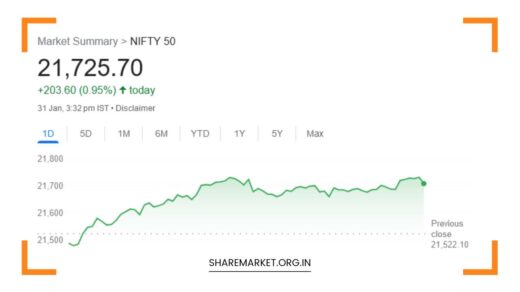Sensex Gain 23 Points, Nifty at 24,836; Nifty Prediction for Tomorrow

Nifty Prediction for Tomorrow
Market Overview and Prediction for July 30
Market Performance on July 29
The Indian stock market closed on July 29 with a somewhat subdued performance, characterized by marginal gains amid a day of high volatility.
The Nifty index, which tracks the performance of the top 50 companies listed on the National Stock Exchange (NSE), managed to end the day slightly higher at 24,836.10, despite experiencing significant fluctuations throughout the session. This performance came after the Nifty had reached a record high of 24,940 early in the day.
The top gainers on the Nifty were led by Divis Labs, L&T, BPCL, Bajaj Finserv, and SBI. These stocks showed notable strength and contributed positively to the overall index performance.
On the flip side, the market saw declines in stocks such as Titan Company, Bharti Airtel, Hero MotoCorp, Tech Mahindra, and Tata Consumer Products, which were among the biggest losers on the Nifty index.
Sectoral performance reflected mixed sentiments in the market. The IT, FMCG, and Telecom sectors saw declines of approximately 0.4% each, signaling some weakness in these traditionally robust sectors.
On the other hand, sectors like Auto, Bank, Media, Capital Goods, Oil & Gas, Power, and Realty exhibited a stronger performance, with gains ranging from 0.5% to 2.5%.
This broad-based sectoral strength helped mitigate broader market declines and contributed to the positive close.
The broader market indices also showed resilience. The BSE Midcap index gained nearly 1%, indicating positive sentiment towards mid-sized companies.
Similarly, the Smallcap index rose by 1.2%, reflecting investor confidence in smaller, high-growth potential stocks.
This breadth of positive movement in smaller indices is often seen as a bullish sign, suggesting that market strength is not confined to large-cap stocks alone.
Technical Analysis and Predictions for July 30
Nifty Index Outlook
Aditya Gaggar, Director at Progressive Shares, offered a detailed analysis of the Nifty index. He highlighted that the market began the day at a record high of 24,940, driven by strong performance in banking stocks which pushed the Nifty close to the 25,000 mark.
However, this upward momentum was curtailed by a bearish divergence in the Relative Strength Index (RSI), a technical indicator that measures the speed and change of price movements.
The divergence indicated potential overbought conditions and a likely pullback, which indeed materialized as the Nifty faced pressure and closed at 24,836.10 with only a marginal gain.
On the daily chart, the formation of a small red candle suggests a potential pause or reversal in the upward trend.
This pattern, combined with the bearish divergence in RSI, indicates that the Nifty may experience a temporary consolidation phase.
Immediate resistance for Nifty is positioned at the psychological 25,000 level, which has proven to be a significant barrier. On the downside, strong support is located at 22,560, a critical level that traders should watch closely.
Jatin Gedia, Technical Research Analyst at Sharekhan by BNP Paribas, provided additional insights into the market dynamics.
He noted that despite a strong start and some volatility, the Nifty closed with a modest gain of 8 points. Over the last three trading sessions, the Nifty has registered a substantial gain of around 800 points, reflecting a strong bullish phase.
However, the appearance of a new negative crossover in the Overly Momentum Indicator signals a potential slowdown in the current momentum.
This technical indicator, which helps identify changes in the strength of price trends, suggests that the market might enter a consolidation phase in the near term.
For the near term, Jatin emphasized that Nifty’s downside support is robust, with significant levels at 24,650 to 24,600.
This range is crucial as it aligns with the important Overly Moving Average, which often acts as a support level in trending markets.
On the upside, the immediate hurdle remains at 25,000, and overcoming this resistance could potentially drive further gains.
Bank Nifty Prediction
Turning to the Bank Nifty, which tracks the performance of major banking stocks, Jatin Gedia observed considerable volatility.
The index faced resistance at the falling trend line around 52,300, leading to fluctuations and a challenge in maintaining upward momentum. This resistance level is significant as it marks previous peaks and highlights the strength of the downward trend line.
On the downside, the Bank Nifty has strong support in the range of 51,200 to 51,000. This support zone is critical for the index as it represents a floor below which the market may struggle to fall.
Given the recent volatility, the Bank Nifty might experience range-bound trading, oscillating between these support and resistance levels in the coming sessions.
Immediate resistance for the Bank Nifty is seen in the range of 51,800 to 52,000, reflecting a zone where selling pressure may intensify.
Investor Sentiment and Market Trends
Overall, the market’s mood remains cautious but optimistic. The presence of resistance at key levels such as 25,000 for Nifty and 52,300 for Bank Nifty suggests that investors are wary of potential overbought conditions.
This sentiment is reinforced by technical indicators pointing to a possible slowdown or consolidation phase.
In addition to technical factors, macroeconomic elements such as economic data releases, corporate earnings reports, and global market trends will continue to influence market movements. Investors should stay informed about these factors and remain prepared for potential volatility.
Final Remarks
As we head into July 30, market participants should brace for potential consolidation and volatility. The Nifty index may face challenges at the 25,000 resistance level while monitoring support around 24,650 to 24,600.
The Bank Nifty is likely to trade within a defined range, with resistance at 51,800 to 52,000 and support at 51,200 to 51,000.
Traders and investors should keep an eye on these levels and adjust their strategies accordingly to navigate the evolving market conditions effectively.

















